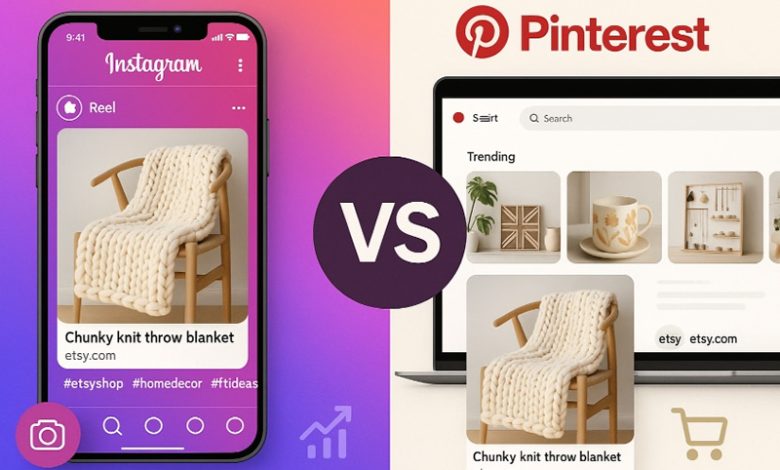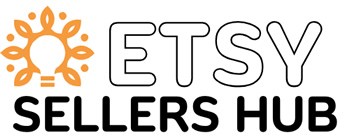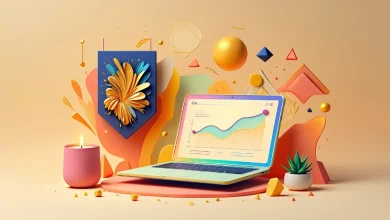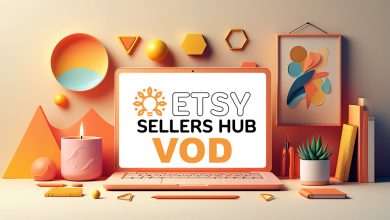Instagram vs. Pinterest for Etsy Sellers: Which Platform Works Best?

By the end of this deep dive article you’ll know which platform to use in order to drive high quality organic traffic and shoppers to your Etsy shop.
Also, you’ll find the tools to do it by yourself or with a little help from our team of experts.
If you’re an Etsy seller, chances are you’ve already dipped your toes into Instagram marketing. After all, it’s a popular platform with millions of active users and a strong visual appeal – perfect for handmade, vintage, and creative products.
But what if there was a better way to reach buyers who are actively looking to purchase – not just scroll and like? That’s where Pinterest comes in. While many Etsy sellers overlook it, Pinterest is actually one of the most powerful tools for driving organic traffic and increasing sales – with Ever green traffic that can last for months!
In this article, we’ll compare Instagram and Pinterest side-by-side, showing you why Pinterest might be the missing piece in your marketing strategy – and how to start using it effectively without starting from scratch.
Also, you’ll be able to add boosters to any path you’ll choose, (Instagram, Pinterest or both).
Why Choosing wisely Matters for Etsy Sellers
As an Etsy seller, your time and energy are limited. You want to invest in platforms that deliver real traffic and results – not just likes or comments.
Both Instagram and Pinterest can help you grow your shop, but they do so in very different ways:
- Instagram is the best platform storytelling, brand building, and connecting with followers.
- Pinterest, on the other hand, works more like a search engine – where people come looking for products, handmade ideas and very often end up making purchases.
If you’re only focusing on Instagram, you’re might missing out on a huge opportunity to attract new customers who are already in buying mode.
Platform Overview
Instagram: The Social Giant
Instagram is a social media powerhouse. It’s ideal for showcasing your personality, behind-the-scenes content, and finished products through posts, stories, reels, and live videos.
However, its strength lies in engagement rather than direct discovery. People follow you, see your content in their feed, and may click through to your Etsy shop – but only if they’re already interested.
Pinterest: The Visual Search Engine
Pinterest isn’t just another social media platform – it’s a search engine where people look for inspiration, gift ideas, home decor, fashion, DIY projects, and much more.
This makes it perfect for Etsy sellers, especially those selling niche items, digital downloads, or seasonal goods. Pinterest users aren’t just scrolling – they’re searching for something specific and ready to buy.
Key Differences Between Instagram and Pinterest
| Criteria | ||
|---|---|---|
| User Intent | Scrolling for entertainment and connection | Searching for ideas, products and inspiration |
| Content Lifespan | Short-lived (a few hours to days) | Long-lasting (weeks, months, even years) |
| Traffic Source | Your followers + algorithm-driven recommendations | Search-based traffic + board sharing |
| Conversion Rate | Moderate – mostly awareness-building | High – users are actively shopping |
| Learning Curve | Easy to start, hard to scale organically | Slightly harder to set up, easier to scale long-term |
| Best For | Brand awareness, community building, influencer-style promotion | Organic growth, product visibility, and seasonal trends |
Pros and Cons of Each Platform
Instagram – Pros
- Great for personal branding and storytelling
- Works well with Reels and short-form video content
- Engagement features like Stories, DMs, and Live sessions
- Easy to use for beginners
Instagram – Cons
- Algorithm changes frequently affect visibility
- Limited organic reach without paid promotion
- Low buyer intent – people don’t go to Instagram to make purchases
- Short-lived content – posts disappear quickly from feeds
Pinterest – Pros
- Acts as a visual search engine.
- Content lasts for months or even years.
- Users have high buyer intent – they’re actively searching for products.
- Excellent for SEO and long-term traffic growth.
Pinterest – Cons
- Slower to build momentum at first.
- Requires more planning and keyword optimization.
- Less immediate interaction with followers.
- Not as visually dynamic as Instagram Reels.
Tools to Help You Transition to Pinterest
If you’re new to Pinterest or overwhelmed by where to begin, here are a few resources to help you get started quickly:
- The Complete Beginners Guide to Etsy Marketing with Pinterest – A step-by-step guide to setting up your Pinterest account and start driving organic traffic to your products and shop from day one.
- Promote Your Products & Store on Pinterest – A premium guide packed with actionable strategies and templates to maximize your impact.
- Promote Etsy Shop Products on Pinterest – Perfect for sellers who want to focus solely on Pinterest tactics for Etsy success.
-
Don’t have a Pinterest account yet? – We’ve got you covered there too, with full service creating a business account, create the Pins for you and upload them with links to your shop – specifically tailored for your niche, to maximize Pinterest organic traffic.
Real-Life Case Study: From Instagram to Pinterest Success
Jessica ran her Etsy candle shop entirely on Instagram. She posted daily, used hashtags, and even collaborated with micro-influencers. But after six months, she was still getting only a few sales per week.
We suggested she try Pinterest – using her existing product photos and repurposing some of her Instagram content. Within three weeks, she started seeing traffic from Pinterest. By week six, over 40% of her sales came from Pinterest pins linking directly to her Etsy shop.
And the best part? She didn’t change a single product – just the platform she used to promote them.
How Pinterest Can Complement Your Instagram Strategy
You don’t have to choose between Instagram and Pinterest. In fact, combining both can give you the best of both worlds:
- Use Instagram for brand awareness and customer engagement
- Use Pinterest to drive targeted, high-intent traffic to your shop
For example, create a Reel about your latest candle design on Instagram, then turn the same footage into a pin that says “DIY Candle Gift Ideas for Christmas” – which will keep appearing in searches long after you post it.
Getting Started on Pinterest Without Starting Over
One of the biggest myths about Pinterest is that you need to start from scratch. The truth? You can reuse a lot of your Instagram content and optimize it for Pinterest.
Here’s how to get started fast:
- Repurpose your Instagram photos – Use the same product images but add clear text overlays for Pinterest (e.g., “Custom Candles for Wedding Favors”).
- Create boards based on your top-selling items – Boards act like categories on Google, helping people find your content again and again.
- Use keywords wisely – Unlike Instagram captions, Pinterest descriptions should be keyword-rich to boost visibility.
- Pin consistently – Schedule pins using Tailwind or Canva so you don’t have to manage everything manually.
- Link directly to your Etsy listings – Every pin should guide potential buyers straight to your store.
Common Mistakes to Avoid When Using Pinterest
Many Etsy sellers try Pinterest and quit after a few weeks because they don’t see instant results. Here are the most common mistakes to avoid:
- Using the same hashtags as Instagram – Pinterest doesn’t use hashtags; instead, focus on rich descriptions and keywords.
- Posting randomly – Pinterest rewards consistency. Pin regularly and update old pins to keep them relevant.
- Ignoring SEO – Pinterest is a search engine. Optimize your pins and boards with buyer-focused keywords.
- Only posting your own content – Mix in curated pins from related niches to gain visibility in group boards.
Frequently Asked Questions
Q: Is Pinterest worth it if I’m already doing well on Instagram?
A: Absolutely! Pinterest gives you access to a completely different audience – one that’s actively searching for products like yours. Think of it as opening a second storefront that never closes.
Q: Do I need to stop using Instagram?
A: No! In fact, Instagram is great for building relationships and showcasing your process. Pinterest simply helps you convert those relationships into sales.
Q: How much time does Pinterest take?
A: Initially, it takes a few hours to set up your profile, create boards, and pin your first batch of content. After that, you can spend as little as 15-30 minutes a day managing it – especially if you use scheduling tools like Tailwind.
If you’re serious about growing your Etsy business, don’t rely on just one platform. Expand your reach and start attracting new customers who are ready to buy – not just scroll and like.
Whether you want to stay on Instagram or expand into Pinterest, we’ve got the tools to help you succeed. Start today with our Beginner’s Guide to Pinterest for Etsy Sellers – just $5 to unlock everything you need to know to start bringing in real traffic and sales.
Ready to take your Etsy shop to the next level? Try Pinterest – and let us show you exactly how to do it right.
So…
While Instagram is excellent for building a brand and engaging with followers, Pinterest offers a unique advantage — it brings in consistent, high-intent traffic that turns into sales. If you’re an Etsy seller, adding Pinterest to your marketing mix could be the difference between slow growth and steady income.
Don’t worry if you’re new to Pinterest – you don’t have to start over. You can repurpose your Instagram content, apply smart keywords, and begin seeing results within weeks. And with our guides and courses, you’ll learn exactly how to leverage Pinterest to your advantage.
Tools to Help You Transition to Pinterest
If you’re new to Pinterest or overwhelmed by where to begin, here are a few resources to help you get started quickly:
-
The Complete Beginners Guide to Etsy Marketing with Pinterest – A step-by-step guide to setting up your Pinterest account and start driving organic traffic to your products and shop from day one.
-
Promote Your Products & Store on Pinterest – A premium guide packed with actionable strategies and templates to maximize your impact.
-
Promote Etsy Shop Products on Pinterest – Perfect for sellers who want to focus solely on Pinterest tactics for Etsy success.
-
Don’t have a Pinterest account yet? – We’ve got you covered there too, with full service creating a buisness account, create the Pins for you and upload them with links to your shop – specifically tailored to maximizing Pinterest for Etsy sellers.






